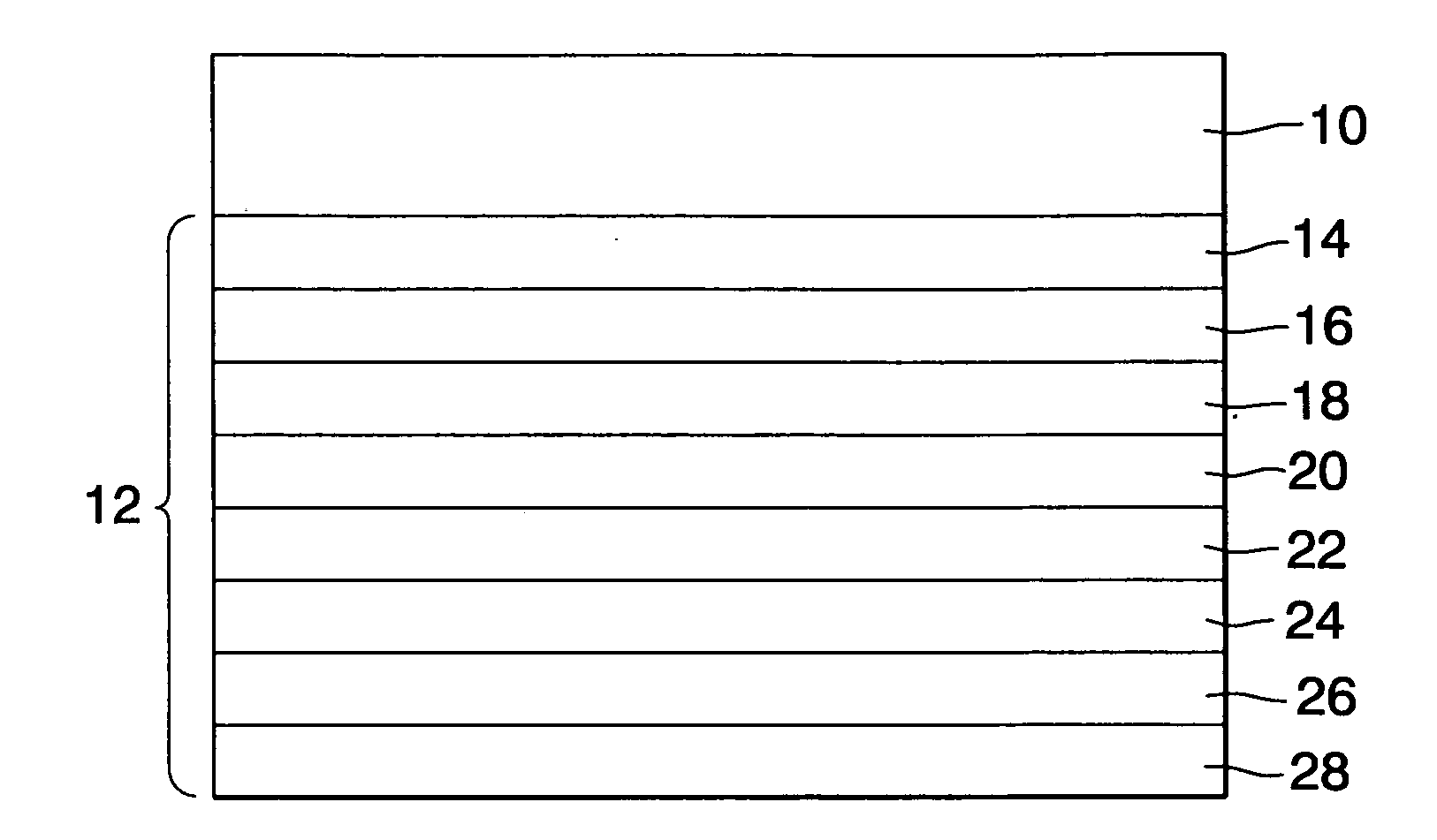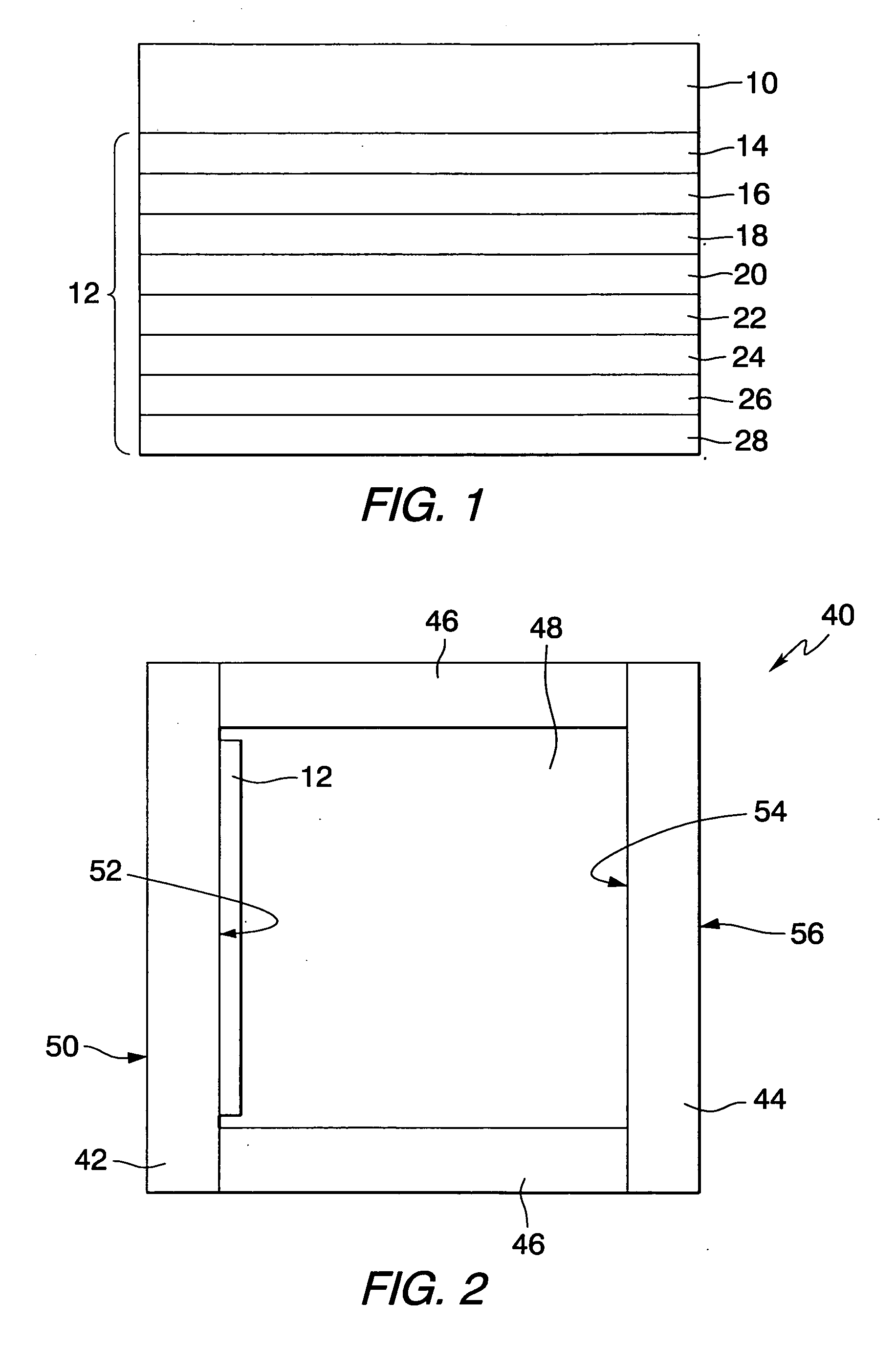Low shading coefficient and low emissivity coatings and coated articles
a low emissivity coating and low shading coefficient technology, applied in coatings, natural mineral layered products, chemical instruments and processes, etc., can solve the problems of oblique incidence reflected color objectionable, and the efficacy of such an anti-reflection approach is restricted
- Summary
- Abstract
- Description
- Claims
- Application Information
AI Technical Summary
Benefits of technology
Problems solved by technology
Method used
Image
Examples
examples
[0033] Coatings were prepared in accordance with the invention and analyzed for optical qualities. The coating layers were deposited at the specified thickness as shown in Table I on pieces of clear float glass of the thickness shown in Table I by MSVD for an IG unit. In the IG unit the coated glass was as reference number 44 and the coating as reference number 54 in FIG. 2. The structure of the coated samples is given in Table I, with the layer thickness given in Angstroms. In each sample, the first, second and third antireflective layers (AR layers) were multifilm zinc oxide and zinc stannate structures as described above. The numbers in Table I are for the total thickness of the specific layers, with each individual zinc oxide film in an AR layer being about 50 to 60 Angstroms thick. The first and second IR reflective layers (IR layers) were silver and the primer layers were titanium. The overcoat was titanium dioxide. The notation ND means that no data was taken.
TABLE IGlassth...
PUM
| Property | Measurement | Unit |
|---|---|---|
| visible light reflectance | aaaaa | aaaaa |
| visible light reflectance | aaaaa | aaaaa |
| shading coefficient | aaaaa | aaaaa |
Abstract
Description
Claims
Application Information
 Login to View More
Login to View More - R&D
- Intellectual Property
- Life Sciences
- Materials
- Tech Scout
- Unparalleled Data Quality
- Higher Quality Content
- 60% Fewer Hallucinations
Browse by: Latest US Patents, China's latest patents, Technical Efficacy Thesaurus, Application Domain, Technology Topic, Popular Technical Reports.
© 2025 PatSnap. All rights reserved.Legal|Privacy policy|Modern Slavery Act Transparency Statement|Sitemap|About US| Contact US: help@patsnap.com


